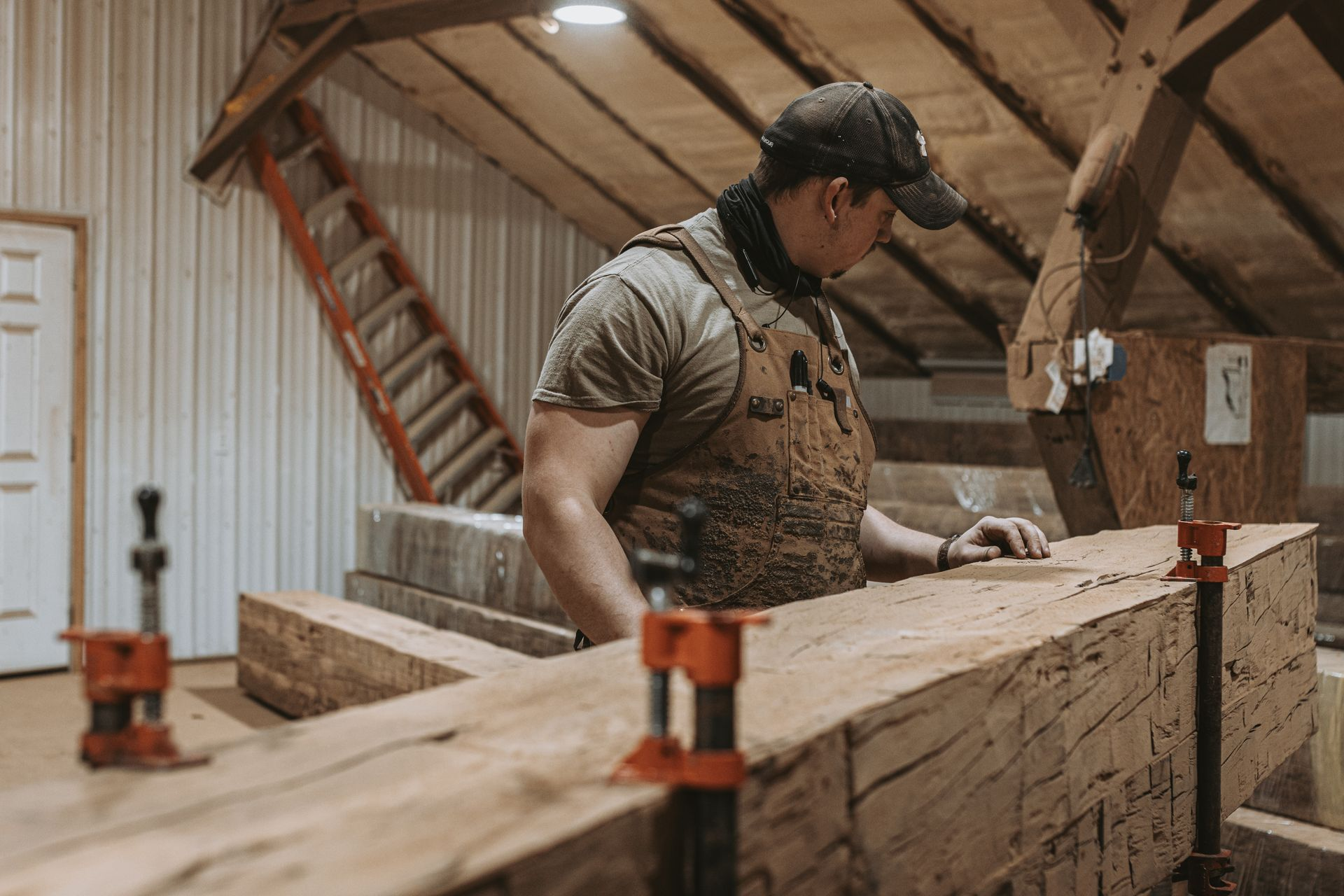A Guide to Choosing the Best Woodworking Fasteners
Expert tips for selecting woodworking fasteners that last

Picking the right fastener can make all the difference in your woodworking project. It’s the choice between a piece that stands the test of time and one that falls apart too soon. If you're crafting furniture, building a deck, or restoring a historic timber frame, understanding your options ensures solid, long-lasting joints.
At Bay & Bent, we’ve restored countless heritage timber frames. While we've seen time-honored joints hold strong for centuries, even the most skilled craftsman relies on the right fasteners to add strength when joining wood. Here’s a guide to help you make the best choice for your next project.
What Are Woodworking Fasteners?
Woodworking fasteners are small hardware pieces designed to join wooden parts. They create mechanical bonds to resist pulling, pushing, or twisting forces. The right fastener depends on the stresses the joint will face, the type of wood, and how long you want the project to last.
Quality fasteners distribute stress evenly across the wood, protecting the fibers from damage. They also account for wood’s natural expansion and contraction, which happens as humidity changes over time.
Your Go-To Fastener Options
1. Screws: Reliable and Versatile
Screws are a favorite in woodworking because they securely grip the wood fibers. Their threaded design locks two pieces together, making them perfect for a variety of projects.
Types of Wood Screws
- Coarse-thread screws: Great for softwood like pine.
- Fine-thread screws: Ideal for dense hardwoods like oak or walnut.
- Self-tapping screws: These skip the need for pilot holes in many cases.
- Pocket screws: Preferred for creating hidden, strong joints.
Look at the Screw Head
- Flathead: Sits flush with the wood surface when countersunk.
- Roundhead/Panhead: Stays visible above the wood, often used for decorative hardware.
2. Nails: Simple But Effective
Nails are straightforward but can offer impressive holding power, especially for quick assembly or large-scale projects.
Common Nail Types
- Finish nails: Thin nails that can be sunk below the surface for a seamless look.
- Brad nails: Smaller nails are used for detail work like molding or trim.
- Ring shank nails: Ridged nails that hold tightly and resist being pulled out.
- Spiral nails: Twisted for added grip strength.
Pro Tip: Match the nail’s length and thickness to your material. Too large, and the wood might split; too small, and you’ll lose holding power.
3. Bolts and Lag Screws for Big Jobs
When strength is a priority, turn to bolts and lag screws. These fasteners excel at holding heavy loads, such as large timber beams or structural frames.
- Bolts: Pass through the wood and secure with nuts and washers. They’re great for super-strong connections but require access to both sides of the wood.
- Lag Screws: Coarser threads make these screws bite deep into wood without needing nuts. Perfect for attaching heavy items, like furniture, directly to wooden structures.
Always use washers with bolts and lag screws to spread the pressure and prevent damage to the wood.
4. Specialized Fasteners for Specific Needs
Modern woodworking has introduced specialized fasteners to handle unique challenges.
- Dowels and Plugs: Use hardwood pins in drilled holes for hidden joints. These rely on glue for a strong, clean connection.
- Threaded Inserts: These metal pieces allow you to insert and remove screws repeatedly, ideal for furniture or fixtures you might disassemble.
- Construction Screws: Made for heavy-duty framing and outdoor projects. Look for corrosion-resistant coatings for durability outdoors.
Picking the Right Material for Your Fastener
Fasteners come in different materials, each suited for specific environments.
- Steel (standard): Affordable but prone to rust. Best for indoor projects.
- Stainless Steel: Rust-resistant, making it perfect for outdoor or humid spaces.
- Galvanized Steel: Coated with zinc to resist corrosion. Great for fences, decks, or any outdoor builds.
- Brass or Bronze: Adds a traditional, attractive finish, but isn’t as strong as steel.
If your project will be outdoors or in wet conditions, always opt for corrosion-resistant fasteners.
Fastener Best Practices
Even a top-notch fastener can fail if it’s installed incorrectly. Follow these tips to ensure strong connections:
- Always Pre-drill: For hardwoods, pre-drilling pilot holes prevents splitting and helps guide screws or nails accurately.
- Pay Attention to Grain Direction: Fasteners driven across the grain hold better than those parallel to it.
- Use Washers: On bolts or lag screws, washers spread the load and keep connections tight.
Remember, getting the size, spacing, and placement right adds loads of strength to your joints.
Adapting to Environmental Challenges
Before you head to the hardware store, think about where your project will live:
- Indoors: Standard steel screws and nails are sufficient.
- Outdoors: Opt for stainless or galvanized fasteners to handle moisture and prevent rust.
- Marine Areas: Use stainless, bronze, or specialized coatings to protect against saltwater corrosion.
- Extreme Temperatures: Account for wood movement. Flexible joints or specific fasteners can help cope with expansion and contraction during hot/cold swings.
Final Thoughts
Choosing the right fastener isn’t just about picking something off the shelf. It’s about understanding your project’s needs, the environment it’ll face, and how the materials will interact over time. By pairing your fastener with a sturdy joint design, you can be confident your work will last.
At Bay & Bent, we’ve seen firsthand how the right materials and techniques turn timber into lasting masterpieces. Whether you’re restoring history or building something new, getting the details right matters. Looking for unique timber or expert advice on your next project? Contact us for guidance you can count on.









